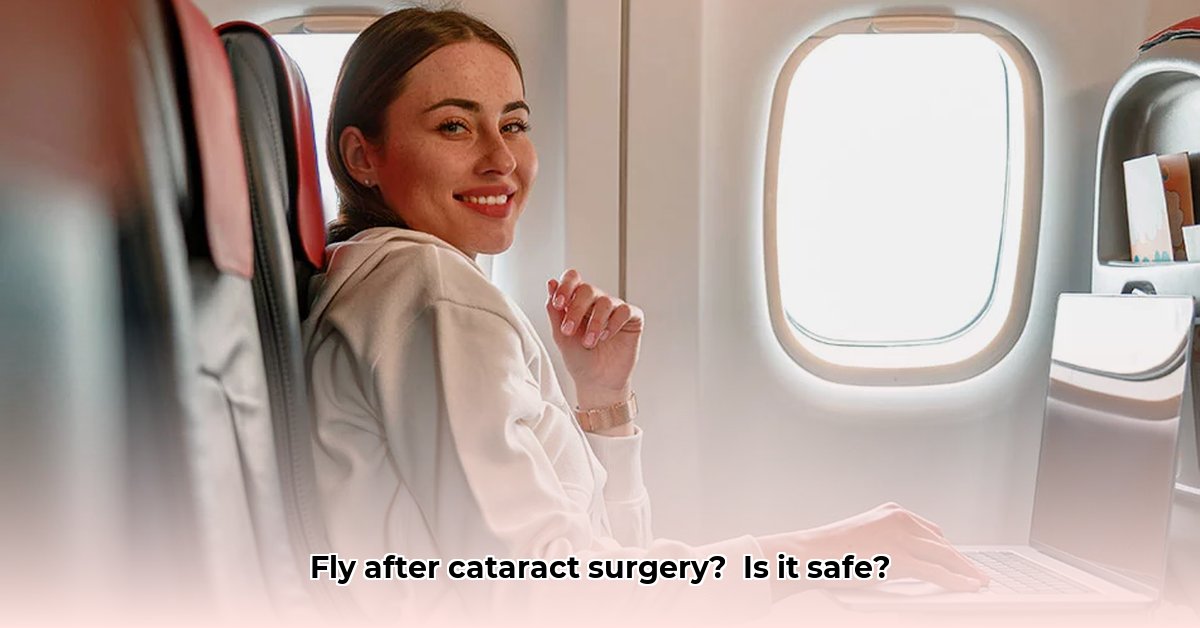
Understanding Your Post-Surgery Recovery
Cataract surgery is a remarkably safe and effective procedure, restoring clear vision for millions. However, your eyes need time to heal completely before air travel. The healing process typically takes one to two weeks, but individual recovery varies. Key factors influencing your readiness to fly include the extent of dryness and the risk of infection. Remember, your ophthalmologist's personalized assessment is crucial. Are you ready to learn the steps to a safe and comfortable flight?
The Potential Risks of Flying
Airplane cabins have notoriously dry air, which can exacerbate dry eyes – a common post-surgical side effect. While cabin pressure changes rarely cause significant issues, they can subtly affect intraocular pressure. These factors, combined, may slightly increase the risk of post-operative complications. To minimize risk, we want to prioritize a cautious approach.
When is it Safe to Fly?
Most ophthalmologists recommend waiting at least one to two weeks after cataract surgery before flying. This waiting period allows your eyes to heal sufficiently, reducing the likelihood of complications from dry air and pressure changes. However, this is a general guideline. Your surgeon will provide personalized advice based on your individual recovery progress and overall health. Always prioritize your doctor's recommendation.
Preparing for Your Flight: A Step-by-Step Guide
To ensure a smooth and comfortable flight, meticulous preparation is key. Follow these steps for a safe journey:
Consult Your Doctor: Schedule a follow-up appointment with your ophthalmologist before booking your flight. They will determine the optimal time to fly based on your individual healing progress. This is the most critical step!
Pack Smart: Pack preservative-free artificial tears (your doctor will recommend a brand), any prescribed pain relievers, and sunglasses to protect your eyes from bright sunlight.
Hydration is Vital: Drink plenty of water before, during, and after your flight. Dehydration worsens dry eyes, so staying well-hydrated is crucial.
Strategic Seat Selection: Choose an aisle seat for easier access to the restroom and more legroom. Comfortable seating enhances your overall travel experience.
In-Flight Eye Care: Bring lubricating eye drops and use them frequently throughout the flight, especially during takeoff and landing.
During and After Your Flight: Protecting Your Eyes
During the flight, remember to blink frequently to lubricate your eyes naturally. Avoid excessive screen time and try to rest. After landing, continue using lubricating eye drops as directed by your doctor and monitor for any signs of discomfort or complications.
Addressing Potential Complications
While complications are rare, watch for increased pain, redness, swelling, or any unusual eye discharge. These symptoms could indicate issues such as infection or inflammation. If you experience any unusual symptoms after your flight, contact your ophthalmologist immediately.
Expert Insight: A Doctor's Perspective
"Post-operative recovery varies, so discussing your travel plans with your ophthalmologist is critical," says Dr. Anya Sharma, MD, ophthalmologist at [Hospital Name]. "While flying is usually safe after a week or two, individual circumstances necessitate personalized advice."
Key Takeaways:
- Timing is key: Most ophthalmologists suggest a 1-2 week wait after surgery before flying.
- Individualized care: Your ophthalmologist's assessment is critical for determining the optimal time for you to fly.
- Preparation is essential: Packing eye drops, staying well-hydrated, and choosing the right seat significantly improve comfort and safety.
This detailed guide provides crucial information for safe air travel after cataract surgery. Remember, open communication with your ophthalmologist remains paramount. By following these instructions, you can enjoy your travels with confidence.